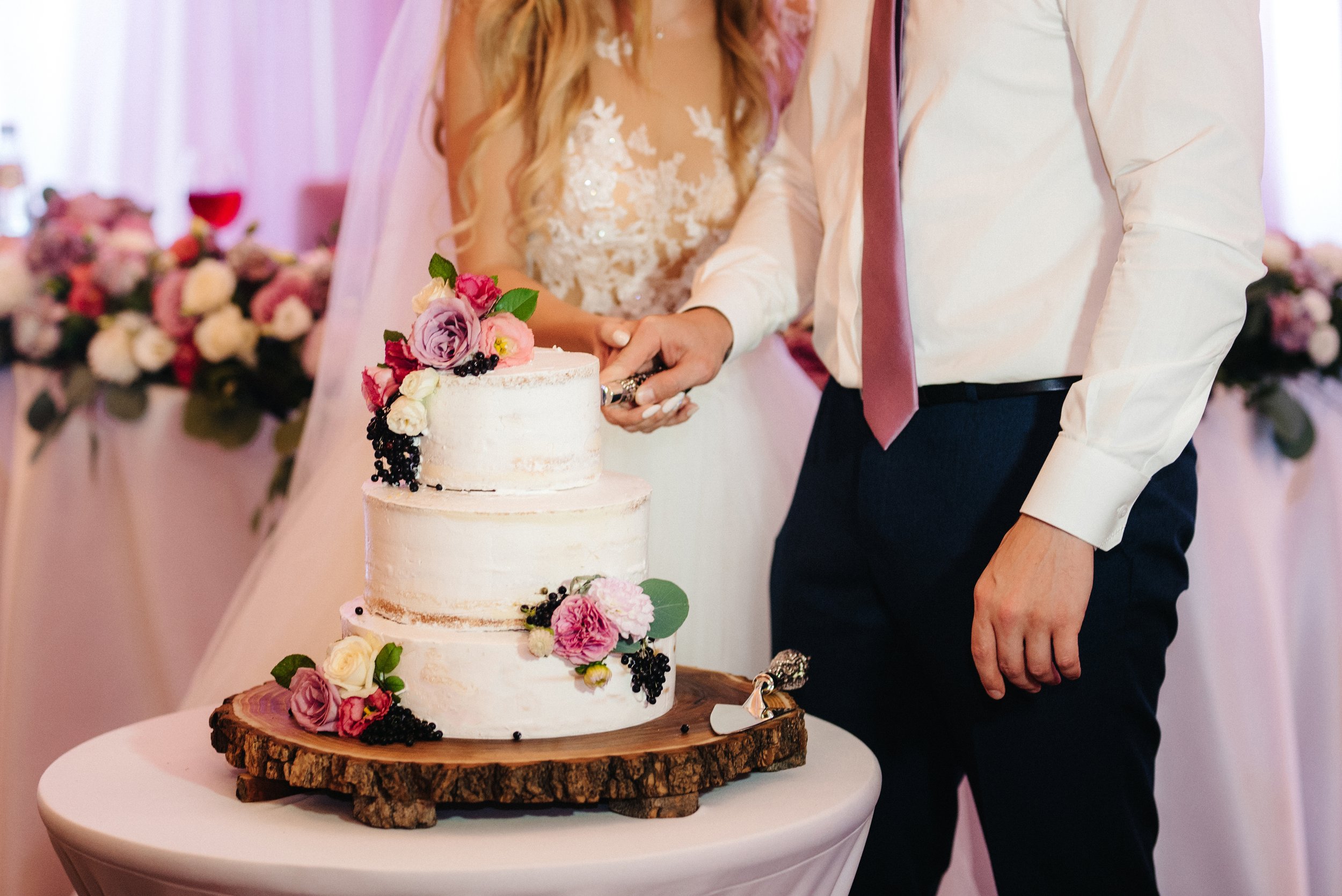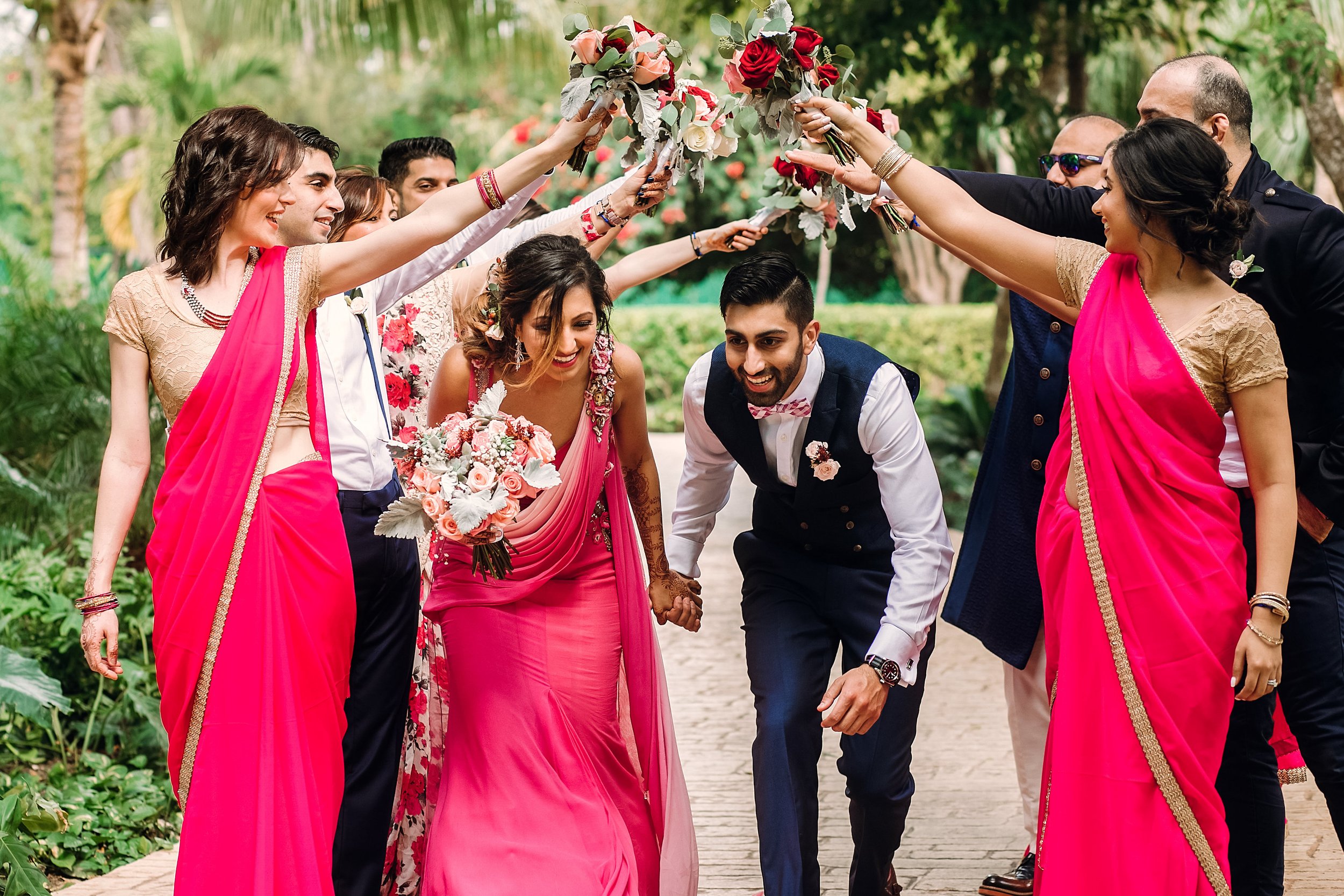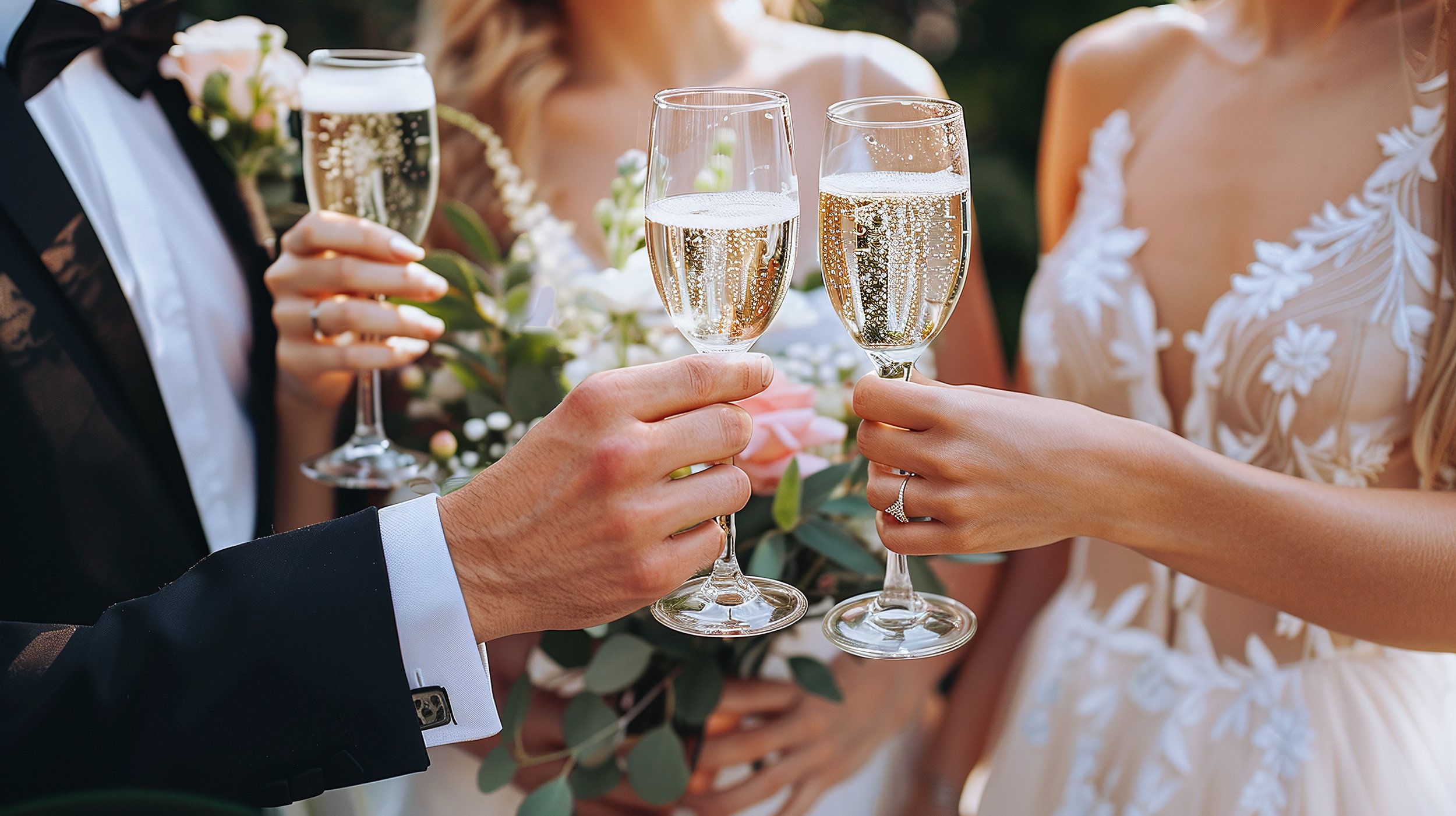Explore Wedding Day Traditions
This post may contain affiliate links, meaning I receive a commission for purchases made through these links, at no cost to you. Full affiliate disclosure.
May 1st 2024
Are you ready to explore timeless wedding traditions mixed with modern twists to create your own unique celebration?
Here, well explore traditions that honor heritage while embracing personal expression, weaving together the threads of history and innovation to craft a day that reflects your love story in every detail.
Cultural and religious wedding traditions
Christianity
Exchange of Vows and Rings: The couple exchanges promises of commitment and exchanges rings as a symbol of their love and unity.
Unity Candle: The couple lights a single candle together, symbolizing the merging of their lives into one.
Jumping the Broom: Derived from African-American tradition, the couple jumps over a broom together, symbolizing the start of their new life together.
Hinduism
Saptapadi: The couple takes seven steps together, each step representing a vow and commitment to their marriage.
Mangal Pheras: The couple walks around a sacred fire four times, each circuit representing a goal in life: Dharma, Artha, Kama, and Moksha.
Judaism
Ketubah Signing: The couple signs a marriage contract (ketubah) before the ceremony, outlining their responsibilities to each other.
Breaking of the Glass: At the end of the ceremony, the groom breaks a glass with his foot, symbolizing the destruction of the Temple in Jerusalem and the importance of remembrance and commitment.
Islam
Nikah: The couple signs a marriage contract (nikah) in the presence of witnesses, outlining the rights and responsibilities of both parties.
Meher: The groom gives a gift (meher) to the bride as a symbol of his commitment and responsibility towards her.
Chinese
Tea Ceremony: The couple serves tea to their parents and elders as a gesture of respect and gratitude.
Double Happiness Symbol: Often featured in decorations, the double happiness symbolizes marital joy and harmony.
Native American
Blanket Ceremony: The couple is wrapped in a blanket, symbolizing their new life together and the warmth and security of their union.
Scottish
Handfasting: The couple's hands are bound together with cords or ribbons, symbolizing their commitment and union.
Japanese
San-san-kudo: The couple takes sips of sake from three cups, representing heaven, earth, and humanity, as a symbol of their union.
Korean
Pyebaek: After the wedding ceremony, the couple pays respects to the groom's family by bowing and offering symbolic gifts.
Mexican
Lazo Ceremony: The couple is draped in a lasso (lazo) made of rosary beads or flowers, symbolizing their unity and commitment.
Western wedding traditions
White Wedding Dress: Popularized by Queen Victoria in the 19th century, wearing a white dress symbolizes purity and innocence.
Exchange of Vows and Rings: The couple exchanges vows, promising lifelong commitment to each other, often accompanied by the exchange of wedding rings as a symbol of their love and unity.
Bridal Party: The bride typically has bridesmaids, and the groom has groomsmen, who stand by their sides during the ceremony and offer support throughout the wedding day.
Walking Down the Aisle: The bride is traditionally escorted down the aisle by her father or another significant person, symbolizing her transition from her family to her new life with her partner.
First Dance: The newlyweds share their first dance together as a married couple, often to a romantic song chosen by them.
Cutting the Cake: The couple cuts the wedding cake together, symbolizing their first task as a married couple and their commitment to provide for each other.
Throwing the Bouquet and Garter: The bride tosses her bouquet to a group of single women, and the groom removes and tosses the garter to a group of single men, symbolizing good luck and the next to marry.
Speeches and Toasts: Family members and friends often give speeches and toasts to congratulate the couple and offer well wishes for their future together.
Something Old, Something New, Something Borrowed, Something Blue: A tradition believed to bring good luck to the bride, who incorporates these items into her attire or accessories.
Last Dance: The final dance of the evening, often shared by the newlyweds with their guests, marking the end of the celebration.
Common military wedding traditions
Arch of Swords/ Sabers: In this tradition, officers or enlisted personnel form an arch with their swords or sabers, creating a passageway for the newly married couple to walk through. As they pass through the arch, the swords or sabers are raised, forming a symbolic barrier against any challenges the couple may face in their marriage.
Dress Uniforms: Military members typically wear their formal dress uniforms, reflecting their service branch and rank. This adds a distinguished and formal touch to the wedding ceremony.
Military Honors: Military weddings often include ceremonial elements such as the presentation of colors, playing of the national anthem, and the performance of military rituals like the 21-gun salute or the playing of "Taps" to honor fallen comrades.
Saber Arch Salute: After the ceremony, as the couple exits the venue, they may pass through another arch of sabers or swords held by their fellow service members. As they do so, the swords are raised in salute, symbolizing respect and well-wishes for the newlyweds.
Military Procession: Similar to a civilian wedding procession, military weddings may feature a formal procession of the bridal party and guests, often led by officers or senior enlisted personnel.
Military Chaplain or Officiant: Many military weddings are officiated by a chaplain or religious leader who serves in the military, adding a spiritual and ceremonial aspect to the union.
Ribbon/ Medal Display: The couple may choose to display their military ribbons, medals, or insignia on their wedding attire as a tribute to their service and accomplishments.
Commemorative Items: Military weddings often incorporate special items such as military-themed cake toppers, camouflage or patriotic decorations, and custom-made invitations featuring service-related imagery.
Modern wedding traditions
First Look Photoshoot
Before the ceremony, the couple arranges to see each other for the first time in a private setting, often captured by a photographer. This allows for intimate moments and reduces nerves before the ceremony.
Personalized Vows
Instead of reciting traditional vows, many couples choose to write their own vows, expressing their love, promises, and personal sentiments to each other.
Social Media Sharing
Couples often create wedding hashtags and encourage guests to share photos and moments from the wedding on social media platforms like Instagram, Twitter, and Facebook.
Destination Weddings
Couples opt to have their weddings in exotic or picturesque locations, often combining the wedding ceremony and honeymoon into one memorable event for themselves and their guests.
Digital Invitations
Instead of traditional paper invitations, many couples send digital invitations via email or create wedding websites where guests can RSVP and find all necessary information about the wedding.
Alternative Bridal Parties
Couples may choose to have mixed-gender bridal parties, honor attendants, or even forgo bridal parties altogether, opting for a more inclusive and personalized approach.
Unconventional Wedding Attire
Some couples depart from traditional wedding attire, opting for non-white dresses, themed costumes, or casual attire that reflects their personal style and preferences.
Interactive Guest Experiences
Couples incorporate interactive elements into their weddings, such as photo booths, lawn games, or DIY stations where guests can create personalized keepsakes.
Food Truck Catering
Instead of formal sit-down dinners, couples may hire food trucks to provide a variety of cuisines, offering guests a more casual and diverse dining experience.
Wedding Websites
Couples create personalized wedding websites where guests can find all the details about the wedding, including venue information, accommodations, registry links, and RSVP options, streamlining communication and organization.
Elopements and Micro-Weddings
Some couples opt for intimate ceremonies with only a few close friends and family members, or they may choose to elope, exchanging vows privately in a destination of their choice.
Technology Integration
Couples incorporate technology into their weddings, such as live streaming the ceremony for guests who can't attend in person or using virtual reality to create immersive experiences for remote guests.
Symbolic wedding traditions
Exchange of Rings
The wedding rings symbolize the eternal bond and commitment between the couple. The circular shape represents unending love and the absence of a beginning or end.
Unity Candle Ceremony
The couple lights a single candle together from two separate candles, symbolizing the merging of their lives and families into one.
Sand Ceremony
The couple pours different colored sands into a single vessel, symbolizing the blending of their individual lives and families into a unified whole. The resulting sand mixture represents the inseparable union created by marriage.
Handfasting
This ancient Celtic tradition involves binding the couple's hands together with cords or ribbons, symbolizing their commitment to each other and the joining of their lives.
Jumping the Broom
Originating from African and African American culture, jumping the broom symbolizes sweeping away the old and leaping into a new life together. It represents the creation of a new family and home.
Breaking of the Glass
In Jewish weddings, the groom traditionally breaks a glass under his foot at the end of the ceremony. This act symbolizes the fragility of life and the commitment to stand by each other even in difficult times.
Tying the Knot
Literally tying a knot during the ceremony, often using a cord or ribbon, symbolizes the couple's unity and the binding of their love and commitment to each other.
Wine Ceremony
The couple each takes a sip of wine from a single glass or drinks from a shared cup, symbolizing their shared life and the joys and sorrows they will experience together.
Tree Planting Ceremony
The couple plants a tree together, symbolizing their growth, strength, and the deepening of their relationship over time. It represents the nurturing and cultivation of their love.
Love Letters/Wine Box Ceremony
The couple writes love letters to each other and seals them in a box with a bottle of wine. They promise to open the box and read the letters on a future anniversary or during challenging times in their marriage, reminding them of their love and commitment.
Dove Release
Releasing doves symbolizes peace, love, and the couple's new journey together. It represents the beginning of their shared life and the hope for a harmonious and joyful future.
Blessing Stones
Guests are given small stones to hold during the ceremony and are invited to imbue them with their blessings and well wishes for the couple. The stones are collected and kept by the couple as a symbol of the support and love surrounding them.
Washing of Feet
In some Christian weddings, particularly within the context of religious ceremonies, the couple may choose to include a foot washing ritual. This act symbolizes humility, service, and the willingness to care for and serve one another in their marriage.
Family and religious wedding traditions
Tea Ceremony
Common in Chinese and other East Asian cultures, the tea ceremony is a ritual where the couple serves tea to their elders as a sign of respect and gratitude, receiving blessings and well wishes in return.
Mehndi Ceremony
A traditional pre-wedding ritual in Indian weddings, the Mehndi ceremony involves applying intricate henna designs to the bride's hands and feet, symbolizing beauty, love, and auspiciousness.
Breaking of the Glass
In Jewish weddings, the groom traditionally breaks a glass under his foot at the end of the ceremony, symbolizing the destruction of the Temple in Jerusalem and the commitment to remember and uphold Jewish traditions.
Circling the Fire
A Hindu tradition called Mangal Pheras, where the couple circles a sacred fire seven times, each circle representing a vow or promise they make to each other and to the gods.
Seven Steps/Saptapadi
A significant ritual in Hindu weddings where the couple takes seven steps together, each step representing a vow they make to support and cherish each other in their marital journey.
Ketubah Signing
In Jewish weddings, the Ketubah is a marriage contract outlining the rights and responsibilities of the groom toward the bride. It is signed by witnesses and often displayed prominently in the couple's home.
Anointing with Holy Water
In Christian weddings, the officiant may bless the couple with holy water, symbolizing purification, sanctification, and the couple's commitment to a life of faith together.
Exchange of Garlands
Common in Hindu and other South Asian weddings, the exchange of garlands between the bride and groom symbolizes acceptance and mutual respect for each other as life partners.
Reading of Scripture or Religious Texts
In various religious ceremonies, passages from sacred texts or scriptures are read aloud, offering guidance, blessings, and spiritual wisdom to the couple as they embark on their marital journey.
Ceremony Under a Chuppah
In Jewish weddings, the couple stands under a canopy called a chuppah, symbolizing the home they will build together and their commitment to create a sacred space for their family.
Veiling of the Bride
In some Christian, Jewish, and Muslim traditions, the bride is veiled before the ceremony, symbolizing purity, modesty, and her transition into married life.
Parental Blessings
In many cultures, the parents of the bride and groom offer blessings and prayers for the couple's happiness, prosperity, and success in their marriage.
Unique wedding traditions
Trashing the Dress
After the wedding, some adventurous couples choose to "trash" the bride's wedding dress by taking fun and unconventional photos in unusual settings, such as jumping into the ocean or rolling around in mud.
Polterabend
This German tradition involves guests breaking porcelain dishes and other items outside the bride's home the night before the wedding to bring good luck and drive away evil spirits. It's a noisy and unconventional pre-wedding celebration.
Locking Love Locks
Inspired by the custom of attaching padlocks to bridges as a symbol of eternal love, some couples incorporate a love lock ceremony into their weddings. They attach a padlock to a decorative frame or structure during the ceremony, symbolizing their commitment to each other.
Pie Cutting
Instead of a traditional wedding cake, some couples opt for a pie cutting ceremony. They cut into a large pie together, symbolizing the sharing of their lives and the sweetness of their love.
Unity Painting
Instead of a unity candle or sand ceremony, some couples choose to create a unity painting together during the wedding ceremony. They each dip their hands in paint and together create a piece of art that symbolizes their union.
Ring Warming Ceremony
Before exchanging rings, the couple passes their wedding rings around to all the guests, who hold the rings and say a silent blessing or prayer for the couple's happiness and success in marriage.
Surprise Wedding
Some couples opt for a surprise wedding, where they invite guests to what they think is an engagement party or another event, only to reveal that they're actually getting married that day.
Pet Participation
Couples who are animal lovers sometimes include their pets in the wedding ceremony, with roles like ring bearer, flower petal thrower, or even serving as the officiant.
Fancy Dress Wedding
Instead of traditional wedding attire, some couples opt for a fancy dress wedding where guests come dressed in elaborate costumes or themed outfits, adding a fun and whimsical element to the celebration.
Flash Mob Dance
Some couples surprise their guests with a choreographed flash mob dance during the reception, getting everyone involved and energized on the dance floor.
Thank you for visiting today!




















